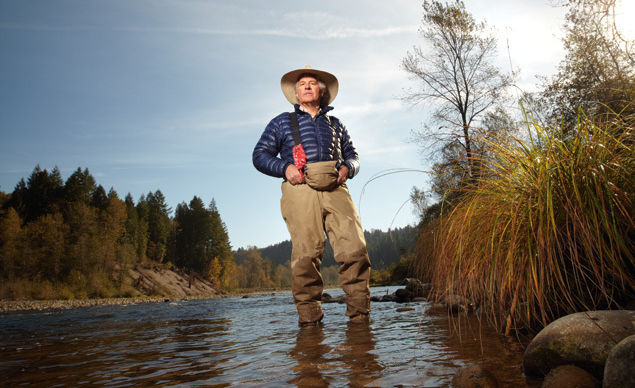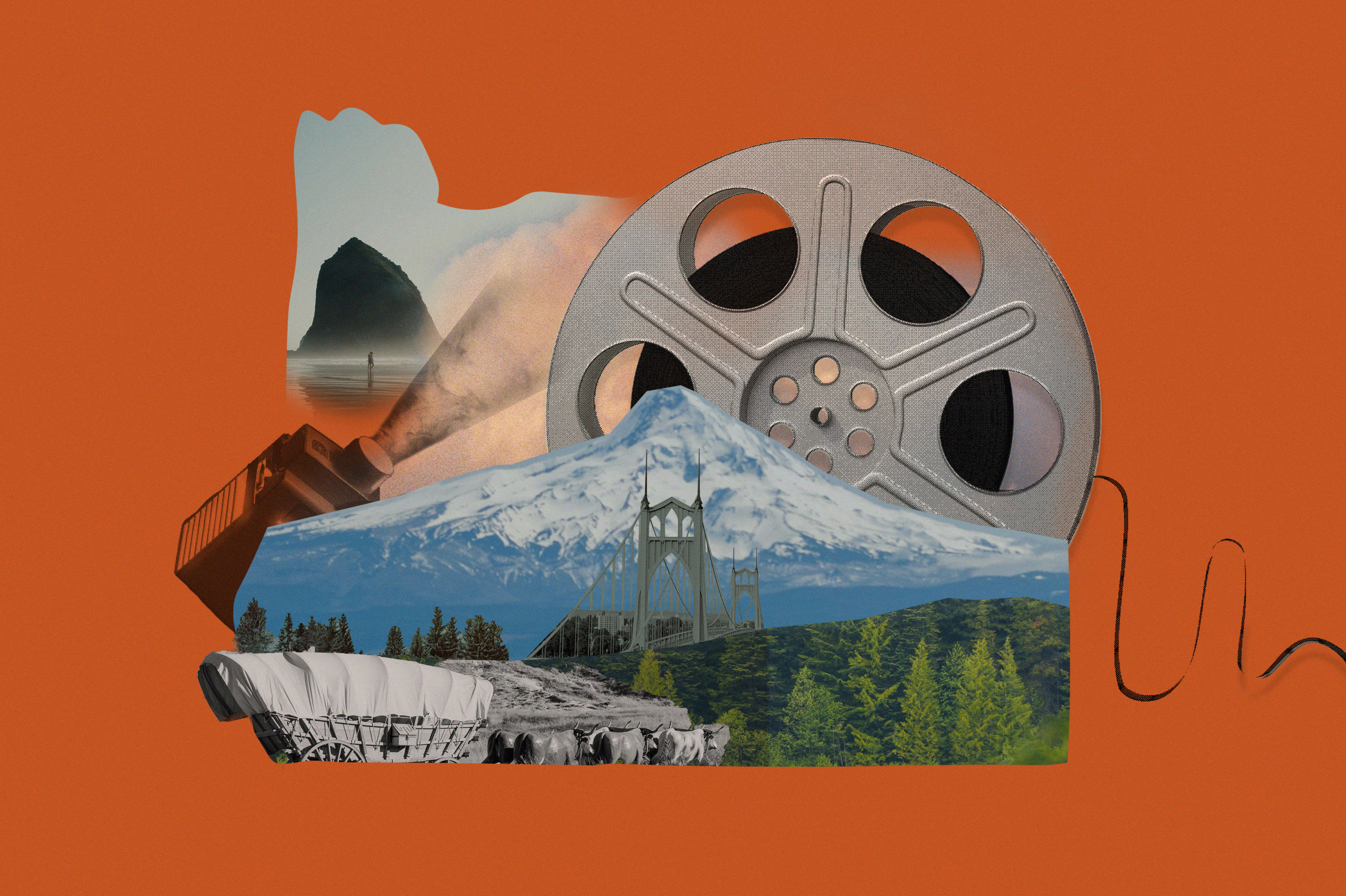Human/Nature

Image: Michael Cogliantry
Few Portlanders’ boots have left their prints so widely yet so lightly across the Western Hemisphere as Spencer Beebe’s. From his Peace Corps work with the “Garifuna” fishermen on the north coast of Honduras in the late ’60s to 13 years saving critical habitats for the Nature Conservancy and Conservation International to his founding of Ecotrust in 1991, Beebe stands as one of the most trailblazing American conservationists of the past 40 years. In his new autobiography, Cache: Creating Natural Economies, set for release this month, Beebe offers a tell-all look at his successes, failures, and the larger, often rut-ridden forks in the road between.
At turns swashbuckling, introspective, and eccentric, the book shares a series of tales about such varied pursuits as his purchases of major swaths of land across the West, a groundbreaking “debt-for-nature” swap in Bolivia, and the creation of the world’s first “eco-bank,” Shorebank Pacific. But Cache also maps Beebe’s gradual understanding that the most sustainable preservation efforts need to begin with human economies—a realization that ultimately led to the controversial 1987 “uprising” he led at the Nature Conservancy that resulted in his founding of Conservation International and, later, Ecotrust.
In this excerpt, a young Beebe (who would later become a deadly effective fundraiser) recalls his stumbling first success convincing the notoriously reserved Portland patrons Howard and Jean Vollum to help the Conservancy jumpstart the protection of the 600,000-acre watershed along the 40-mile corridor of the Sandy River.
The Sandy River, Oregon
Fresh out of graduate school in the summer of 1974, I landed a job with the Nature Conservancy’s Northwest Office in Portland. An $11,000 annual salary, even though I had to raise it myself, seemed like great good fortune. One of my first tasks was to assemble private lands along the Sandy River, just 20 miles east of Portland.
Some old family friends, Sam and Arch Diack, had acquired 270 acres of land back in 1941, almost three-quarters of a mile on both sides of the Sandy River. Now, years later, they wanted to give 160 acres of their Sandy River property to the Nature Conservancy. But recognizing that 160 acres do not a wild river make, the Diacks challenged the Conservancy to commit to a long-term program of protecting an entire six-mile river corridor between Dodge Park to the south and Oxbow Park to the north. Our game plan was to purchase properties that threatened the larger river ecosystem with the kind of subdivisions that had invaded the lower river decades before. First, of course, we had to raise some cash. We had enjoyed some success raising $500–5,000 gifts with guided rafting trips down the river, but we neededsome big fish, and Portland’s biggest at the time were Howard and Jean Vollum.
Howard and his navy friend Jack Murdock had founded and built Tektronix, a pioneer in the development of the oscilloscope and eventually thousands of electronic components, and one of Oregon’s great business success stories, not to mention the state’s largest private employer. The problem was that no one in the philanthropy community knew the Vollums—not even their phone number. Howard and his wife, Jean, were a quiet, unassuming couple busy raising five sons and building a business. Which isn’t to say they weren’t generous. The Vollums had made very substantial gifts to Portland schools and universities and for the magnificent Mt Angel Abbey Library, designed by Alvar Aalto. But they made almost all of their gifts anonymously. Having exhausted all leads through the appropriate high-society channels, in a stroke of either desperation or momentary common sense, I picked up the Portland phone directory and looked up Howard Vollum. There it was, his number, right in the phone book!
Emboldened by my ingenuity, I dialed the number, thinking, What have you got to lose? I found out soon enough. After several rings, a gruff deep voice answered, “Hello.”
“Mr. Vollum?” I said.
“No, this is Mrs. Vollum. Who are you?”
I swallowed a large “Oops,” and went into my spiel: “My name is Spencer Beebe. I’m with the Nature Conservancy—”
“What do you want besides my money?” demanded Mrs. Vollum.
I’d done near-death skydiving, waterfall-kayaking, and sailed a homemade boat in gale-force winds across the Pacific from Costa Rica to French Polynesia, but none of these experiences had induced the terror of Jean Vollum’s question. I finally blurted out something like, “Your advice about preserving the Sandy River! Would you like to go on a float trip and see it?”
“No, but my son Danny might. He likes rivers. Here’s his number.”
She gave it to me and hung up.
Oh, my God, I thought. I had ignored all the most fundamental rules of fundraising: get a proper, personal introduction from just the right person; meet one-on-one in an appropriate setting; listen carefully—to the body language, the subtleties of expression and tone; look your prospective donor in the eye and ask for an absurd amount of money, then shut up; the next person who talks loses.
OK, OK, I’ll call Danny! I thought. And I did.
Sophomore at Oregon State, banjo maker and player, outdoorsman, aspiring pilot, river rafter; 220 pounds, six-foot-two, red hair, and big smile—Danny Vollum was an environmentalist through and through. It didn’t take a lot of arm-twisting on my part to conscript him to help raft potential donors down the Sandy River. And eventually, Danny recruited his parents to join us on a float through the Sandy River Gorge as well.
Howard Vollum was an electronic and business genius, but his idea of the Great Outdoors lay between the front door and his car on the way to the office. He showed up for the wilderness raft trip in an overcoat and wing tips.
I mentally adjusted my game plan.
The first quarter-mile of the run consisted of a rapid called Pipeline, a lively piece of water that has been known to flip many a raft. But I knew about a trail to a friendly little beach just at the rapid’s end. Not wanting to lose the Vollums before I’d landed them, I suggested that Howard and Jean take the 15-minute walk around Pipeline. I gave them what I thought to be clear directions, but we spent a furtive hour waiting on the beach below wondering where they’d gone. We searched the trail, but they were nowhere to be found. I was sure that I’d figuratively, as well as literally, lost them. They finally showed up sweaty, red-faced, and exhausted: they’d missed the trail and bushwhacked over a boulder field alongside the river instead of along the gentle, but apparently hidden, trail.
“Nice job,” Danny said. “That was the hardest part of the trip.”
Then Jean took me aside and told me Howard was suffering an impending diabetic attack and needed sugar—a candy bar, cookies, anything sweet. Without it he would have to be rushed to a hospital. We managed to find the crumbling, wet remnants of a Snickers bar stuck to the bottom of a river bag. Howard accepted it graciously and, soon, gamely revived. We headed downstream.
During our picnic lunch on a sunny beach, Howard poked his finger down through several layers of wet sand and noted its thermodynamic characteristics. This was infinitely more interesting to him than global threats to biodiversity or even local threats to the Sandy. Through it all, however, he was sportingly gracious. Jean, for her part, had a great time and was genuinely sympathetic to our mission. In the end, we forged what would be a long and productive relationship with the Vollum family.
With their help and many others’ over the next four years, we successfully raised $130,000 and assembled almost 500 acres of critical private land in five parcels along six miles of the Sandy River Gorge. We convinced the federal Bureau of Land Management to protect a magnificent 400-acre stand of old-growth Douglas fir, and the State of Oregon to create the Sandy River Wild and Scenic River, which limited development on additional lands. And, now, through public-private partnerships and the leadership of a coalition of nongovernmental organizations and state and federal agencies, the entire 600,000-acre watershed enjoys protections—a river corridor 40 miles long from its source on Mount Hood’s glaciers to the Columbia River.
In the summers of 2007 and 2008, Portland General Electric removed the 1908 Marmot Dam and then the last barrier on the Little Sandy River, making the watershed one of the most intact, wild, and free anywhere to be found so close to a major metropolitan area. The Sandy River system also protects Portland’s famously delicious unfiltered drinking water, from the Bull Run watershed, an important tributary of the Sandy.
All in all, my day with the Vollums was not a bad start in traditional land preservation.




